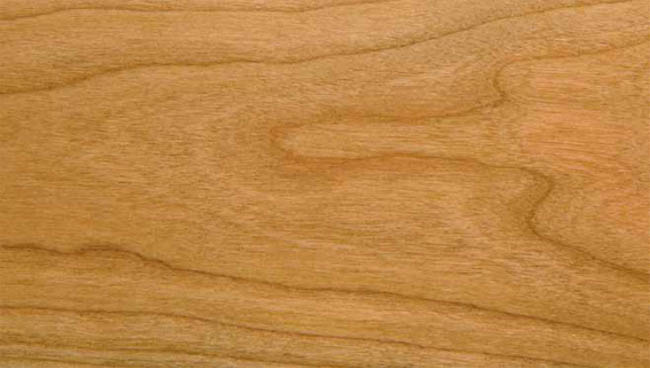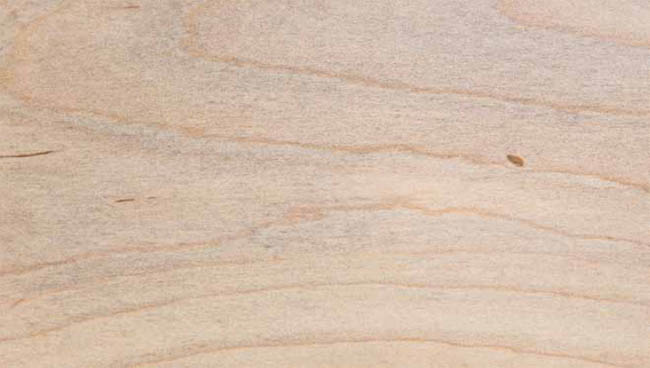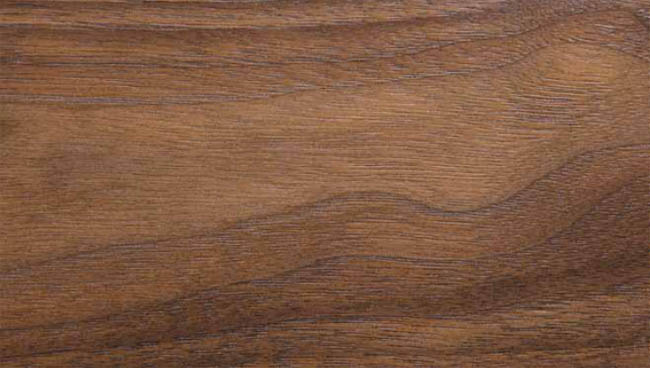
Movie studios love ferrous sulfate when building outdoor sets because it instantly imparts a very natural-looking weathered—as opposed to aged—effect, particularly when applied to woods that contain tannic acid.
Maple entryway table by James Farrell. Maple contains little to no tannic acid. The top and drawers were treated with a wash of ferrous sulfate. the resulting array of blue, gray, gold and brown tones all highlight the maple’s striking figuration. A pre-wash of tannic acid was not necessary to produce these results. The legs were ebonized.
Its gradations of gray tones on light wood are reminiscent of driftwood. If you want to retain the driftwood look of ferrous sulfate, don’t use a lacquer finish because it has an amber cast. Use an acrylic finish, which is clear. Also bear in mind that ferrous sulfate darkens over time.
Sometimes ferrous sulfate is mistakenly called iron, but technically speaking, ferrous sulfate is a chemical compound while iron is an element. Over-the-counter ferrous sulfate available in pharmacies to treat iron-deficiency anemia contains additional ingredients and is therefore not a suitable substitute for the pure compound required to color wood. You can purchase the preferred ferrous sulfate from online companies specializing in wood finishing products.
Charles and Henry Greene treated the Douglas fir carriage-house doors of their famed Blacker House with ferrous sulfate. Subsequent owners painted the doors. In 2004 the paint was removed and the doors were again treated with ferrous sulfate.
Ferrous sulfate comes in the form of light greenish/gray powdery crystals. As long as it is stored in a tightly sealed bottle and kept in a dark place, it has an almost infinite shelf life. It is fine to dispose of ferrous sulfate down the drain because it is often used in conjunction with other compounds in the treatment of waste water to control odors and remove phosphates!
Other names for ferrous sulfate include green vitriol, copperas, and iron (II) sulfate.
As with all chemicals, you do not want to inhale or ingest ferrous sulfate. Always wear gloves, a mask and eye protection when handling it.
Architectural timbers on port cochere.
Charles and Henry Greene treated the massive Douglas fir timbers on the port cochere of their famed Blacker House with ferrous sulfate, knowing that it would patinate to a dark brown color over the years rather than a gray color. The timbers were last treated with ferrous sulfate in 1995.
Recipe for Ferrous Sulfate
⅛ tsp of ferrous sulfate
4 oz. hot distilled water
4 oz. cold distilled water
Slowly stir the ferrous sulfate into 4 ounces of hot distilled water. Mix until thoroughly dissolved and then add 4 ounces of cold distilled water. Mix thoroughly. Strain this solution into a clean container and apply when it has come to room temperature. Wipe the surface with a rag before the solution dries. Do not sand until after you have applied your first coat of finish.
Alder

Cherry
Mahogany

Maple
Oak

Walnut